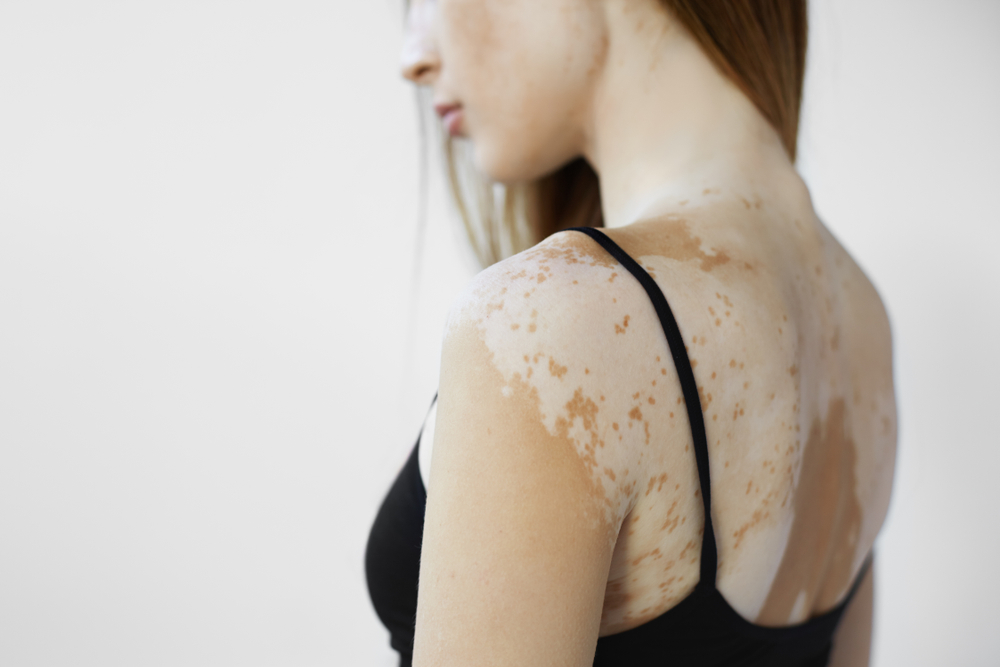Few people have ever heard of vitiligo, a disorder that leads to the skin losing its color, often resulting in white patches. But for those dealing with the condition, it can have a huge impact on their lives.
The good news is that there are a number of treatment options. Unfortunately, there’s no single and universally effective way to restore skin affected by vitiligo — in other words, while simple cosmetic changes or medication may work for some patients, others will require surgery. As with many conditions, it’s important to recognize that every situation is unique and requires a comprehensive treatment plan created in consultation with a physician. That said, what treatment options are available for those dealing with vitiligo?
Topical Medicated Creams
Let’s get one thing straight right away: there are no medications capable of completely or instantly restoring skin color lost through vitiligo. However, there are a number of drugs that are designed to help restore some of the skin’s original color.
One of the most widely prescribed types of medication is cream that, when applied to the skin, helps reduce inflammation. Most commonly, topical steroids are prescribed. In doing so, these creams can help to reverse some of the effects of vitiligo, though outcomes often depend on when the cream was applied (the earlier, the better). It’s also worth noting that some creams can result in irritating or even painful side effects, from dry skin to further discoloration.
Medicated Ointments Targeting Immune System
While some creams are designed to help restore the original appearance of the skin by reducing inflammation at the skin level, others are designed to get similar results through stimulating the body’s immune system. This is the case when ointments made with tacrolimus or pimecrolimus (which are calcineurin inhibitors) are prescribed. They act similar to topical steroids but with slightly better side effect profile.
Generally speaking these kinds of treatments have fewer side effects but they may also be less effective; for that reason they’re typically prescribed to people with minor cases of vitiligo. It’s also worth noting that medical experts are currently investigating possible links between these kinds of treatments and the development of lymphoma and skin cancer.
Light Therapy
One of the more unique treatments for vitiligo is narrowband UVB phototherapy. This uses a very narrow wavelength of UV radiation that has not been shown to cause skin cancer.
Depigmentation
One of the more radical treatments for vitiligo, otherwise known as decolorization of the skin, is to actually focus on removing the original color that remains on the body. In a way, it’s an acknowledgment that the condition is not going to be easily reversed, which is why this strategy is often reserved for those with extensive vitiligo that has proven resilient in the face of other treatment options.
Those who pursue depigmentation treatment for vitiligo will have a special depigmenting agent applied to all areas of the skin not visibly affected by the condition. In time, this therapy, which is performed daily for up to a year, will lighten the skin to match those areas discolored by vitiligo. Unfortunately, there are side effects to this permanent solution, including significant sensitivity to sunlight.
Skin Grafting
Generally speaking, surgery should always be the last option and treating vitiligo is no different. In most cases, surgery is only resorted to if other treatment options — from medications to light therapy — have proven mostly fruitless in an effort to return affected skin to its original color.
The most popular surgical strategy involves skin grafting, or removing skin from unaffected areas of the body and attaching it to those body parts visibly affected by vitiligo. This strategy is most effective when the patient has mild or moderate vitiligo and may not be possible for those with more extensive cases of the disease. There are also side effects to consider, from scarring, permanently rough skin, or the development of an odd skin color.
Blister Grafting
A slightly less intense surgical option for treating vitiligo is known as blister grafting and involves creating blisters on areas of the skin unaffected through the use of suction. These blisters are then removed and placed on areas of the skin visibly affected by vitiligo. As the blisters heal, they have the potential to return color to the discolored areas of the skin.
As with skin grafting, blister grafting can result in a number of nasty side effects, from permanent scars to rough skin and odd colorization of the skin. For these reasons, blister grafting is rarely a physician’s first choice for treating vitiligo.
Micropigmentation
The opposite approach of depigmentation, which involves removing the pigment from the skin unaffected by vitiligo, is micropigmentation. Popularly known as tattooing, this strategy involves surgically implanting pigments under the skin, artificially creating the appearance of darker skin that, ideally, is closer to the skin’s original color.
Micropigmentation is a difficult and costly procedure, however. It can be challenging to precisely match the skin’s original color, while the procedure itself has the potential to trigger a new outbreak of vitiligo. So far, tattooing has proven most successful in limited applications and in the skin around the face.










